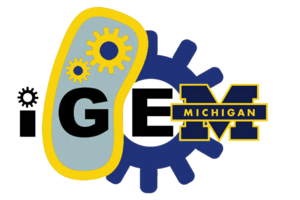Team:TU-Delft/Collaboration
From 2011.igem.org








-
 Home
Home
-
 The Project
What we are doing
The Project
What we are doing
-
 The Team
Who we are
The Team
Who we are
-
 Notebooks
What we did
Notebooks
What we did
-
 Human Practice
Awareness
Human Practice
Awareness
-
 Safety
Responsibilty
Safety
Responsibilty
Collaboration
Michigan
After our project was on track, we had a look at the projects of the other 2011 iGEM teams. We were curious which new projects would submerge and we found some teams with projects related to ours. The Michigan iGEM team approached us for collaboration. We filled in their survey and we set up a videoconference. Since Michigan had based their project on the same previous work done by the Berkeley Wetlab 2009 team, this was an excellent basis in the early stage of iGEM to exchange information on thoughts, tasks devision and already encountered problems. The videoconference brought us two hours closer to the Jamboree in a split second. It was exciting to talk to people halfway across the world that are in the middle of the same experience and have based their project on the same already existing Biobrick!
Lyon-INSA-ENS
Short after the collaboration with Michigan, our supervisor Aljoscha Wahl, brought to our attention that besides the Michigan team also the Lyon-INSA-ENS and ZJU-China teams were working on bioadhesion. We decided to contact the Lyon-INSA-ENS team, because they were also working on controllable biofilm formation, namely on a Cobalt inducible biofilm.We set up another videoconference and again we were two hours closer to the Jamboree by the blink of an eye. During this videoconference real commitments were made on helping each other:
• As a conformation of the experiment results we decided to replicate each other experiments in each other laboratory to confirm if the results are replicable. The Lyon-INSA-ENS team would do our hydroxylation assay to confirm our results and we would perform their 24-well plate adhesiveness protocol to confirm their results.
• Lyon-INSA-ENS sent us their synthesized trc promoter, a strong promoter, in Biobrick format which might be useful for our own Biobricks.
• In return we offered Lyon-INSA-ENS our help by visualizing their strain with the use the disk confocal microscope.
By Skype there was always a direct channel to help each other out.


Retrieved from "http://2011.igem.org/Team:TU-Delft/Collaboration"
 "
"


